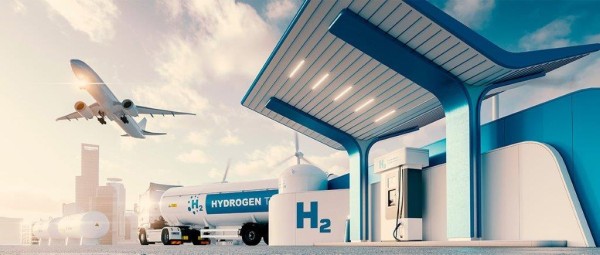Growing concern around the economic and geopolitical implications of possible shortages in oil supply and the significance of reducing greenhouse gas emissions in the transport sector are triggering the search for alternative fuels. Hydrogen offers promise as a clean energy carrier, as it can contribute to three vital targets that policymakers currently favour around the world: GHG emissions reductions, energy security and reduction of local air pollution.
Before Hydrogen can be a sustainable alternative to oil and gas, numerous challenges remain to be mastered. That particularly applies to storage and transportation, which are crucial factors for a global hydrogen economy. Today, we are shipping oil and gas from production to consumption countries, or flowing it through pipelines. Hydrogen must be transported, too and from countries where green electricity for hydrogen production is cost effective. This was it will enable mass production, which can be utilised for regions with a larger consumption of energy.
As the lightest of all elements, Hydrogen is highly volatile, making transportation and storage considerably more difficult. In the form of gas, it can be stored in multi-layered pressure tanks and underground caverns. In its liquid form it can be stored at –253 °C (–423.4 °F) in insulated cryogenic tanks. Both variants are technically complex and energy intensive.


Alternatively, Hydrogen can be converted into methane, syngas or liquid synfuels. This has the advantage of being more manageable and versatile when handling. However, the energy-intensive nature of the conversion process is a disadvantage. Adsorption, a process in which the hydrogen molecule is linked to solid or liquid carriers, is another possibility for storing and transporting Hydrogen.
The abbreviation LOHC, which stands for liquid organic hydrogen carrier, is frequently mentioned in this context. In this process, Hydrogen is chemically linked to a viscous carrier in a hydrating reaction. As a result, the utilisation of Hydrogen becomes more straightforward, safer and available at a lower cost. This is because the current crude oil-based energy system could be adapted, without significant modifications to the new energy.
A key technology that still needs to be improved to enable filling the tank with LOHC and using it like a conventional liquid fuel, is a hydrogen fuel cell that can operate directly with LOHC. Schaeffler looking to develop this together with Hydrogenous LOHC Technologies GmbH and HI ERN. The automotive and industrial suppliers’ part in the project, is the production of suitable bipolar plates in which the company uses synergies and draws on know-how and experience from previously developed fuel cell technology.
In conventional fuel cells, as well as in LOHC versions, bipolar plates - as an integrated assembly between two membrane electrode units of a fuel cell stack - serve other purposes besides electrically connecting the cells: such as, distributing gas across the surface of the plate, separating gas between adjoining cells, external sealing, and cooling of the system.
However, for Hydrogen to be transported, transformed, or used it first has to be produced. The International Organisation for Renewable Energies predicts an electrolyser capacity of 5,000 gigawatts for 2050. Making enough Hydrogen available to cover twelve per cent of the global energy demand. Against this backdrop, it is evident that Technological innovations and their accelerated rollout are crucial to ensuring this will happen.

Schaeffler intends to make important contributions to this effort based on its diversified technological know-how. “Due to our industrial and automotive divisions, we’re optimally poised to address Hydrogen on a broad base. We have a unique competitive advantage here, especially because an industrialised supplier landscape is still lacking in many areas of hydrogen technology,” says Dr Stefan Gossens, Vice President of Hydrogen Strategy at Schaeffler. “We’re already in contact with many potential hydrogen customers in a wide range of business activities. Our forte in industrialisation enabling us to quickly transfer innovations into mass production – at the top quality – is a major advantage.”
